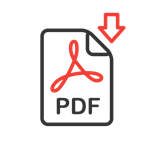
The Future is AI-First, Human-Always

We stand at the precipice of a technological revolution, where artificial intelligence is transforming how we work, live, and create value. Yet, as AI capabilities continue to advance at an exponential rate, it is crucial to remember that the future will be AI-first, but human-always.
The growth of AI has been staggering. Computing power is doubling every 3.4 months, and global investment in AI exceeds $120 billion annually. Widespread adoption is also underway, with 70% of enterprises already implementing AI solutions, and the usage of generative AI tools skyrocketing by 450% since 2022.
As AI capabilities continue to evolve, we are witnessing the emergence of multimodal systems that can understand diverse inputs, as well as self-improving models that are approaching the threshold of Artificial General Intelligence (AGI).
How AI is Transforming Industries
Across a wide range of sectors, AI is driving remarkable transformations:
- Healthcare: AI-assisted diagnostics have improved accuracy by 30%, while drug discovery timelines have been cut by 60%.
- Manufacturing: Predictive maintenance powered by AI has reduced downtime by 45%, and optimized production has increased output by 25%.
- Financial Services: Fraud detection has improved by 60%, and personalized services have driven a 40% increase in engagement.
Retail: Inventory optimization fueled by AI has saved 28%, and hyper-personalization has boosted conversions by 35%.
The Human Element: What AI Cannot Replace
As AI continues to advance, it is essential to recognize the unique and irreplaceable value that humans bring to the table. Four key attributes set humans apart:
- Empathy and Compassion: The emotional connection that drives meaning and purpose.
- Creative Intuition: The ability to make novel connections beyond pattern recognition.
- Ethical Judgment: The value-based decisions that reflect our principles and moral compass.
- Purpose and Direction: The meaningful goals that give AI a sense of direction and significance.
Finding the Balance: Augmentation vs. Automation
AI can be a powerful tool, but it is not a panacea. The key is to strike the right balance between automation and augmentation:
Automation replaces repetitive, dangerous tasks, such as data entry, assembly lines, and basic reporting. It focuses on efficiency, consistency, and cost reduction, but carries the risk of job displacement and skills obsolescence.
Augmentation, on the other hand, enhances human capabilities and decision-making, as seen in medical diagnosis, creative tools, and strategic planning. It amplifies human strengths and opens up new possibilities, transforming jobs rather than eliminating them.
Ethical Considerations in an AI-Driven World
As we embrace the AI revolution, we must grapple with critical ethical considerations:
- Privacy and Data Rights: Protecting personal information while enabling innovation.
- Fairness and Bias: Ensuring AI systems treat all groups equitably.
- Transparency: Understanding how AI-driven decisions are made.
- Impact on Society: Managing economic shifts and preserving human dignity.
Preparing Your Organization for an AI Future
To thrive in the AI-first, human-always world, organizations must:
Cultivate an AI-centric leadership mindset, with a clear vision and investment in executive education.
Build a robust data foundation and implement a governance framework for responsible AI.
Upskill the workforce with AI literacy programs and create hybrid teams with AI, domain, and design expertise.
Embrace a culture of experimentation and continuous learning, starting with high-impact, low-risk pilots.
Case Studies: Successful Human-AI Collaborations
Innovative organizations are already demonstrating the power of human-AI collaboration:
Mayo Clinic: AI-assisted diagnostics improved cancer detection by 40%, while doctors provided context, verified results, and delivered care.
Spotify: AI discovers music patterns, while humans curate the final experience, resulting in 1.4 billion personalized sessions weekly and 50 million subscriber growth.
Unilever: AI optimizes logistics, while humans set sustainability goals, leading to a 26% reduction in emissions and $1 billion in savings.
Next Steps: Embracing an AI-First, Human-Always Mindset
As you embark on your AI journey, follow these key steps:
- Discover: Identify high-value opportunities for AI integration within your organization.
- Design: Create human-centered AI solutions that augment and empower your workforce.
- Develop: Build the skills and capabilities required for effective human-AI collaboration.
- Deploy: Implement your AI initiatives with continuous feedback and adaptation.
The future is AI-first, but it is also human-always. By striking the right balance and embracing the unique strengths of both AI and humans, we can unlock unprecedented possibilities and shape a better world for all.
Read More

